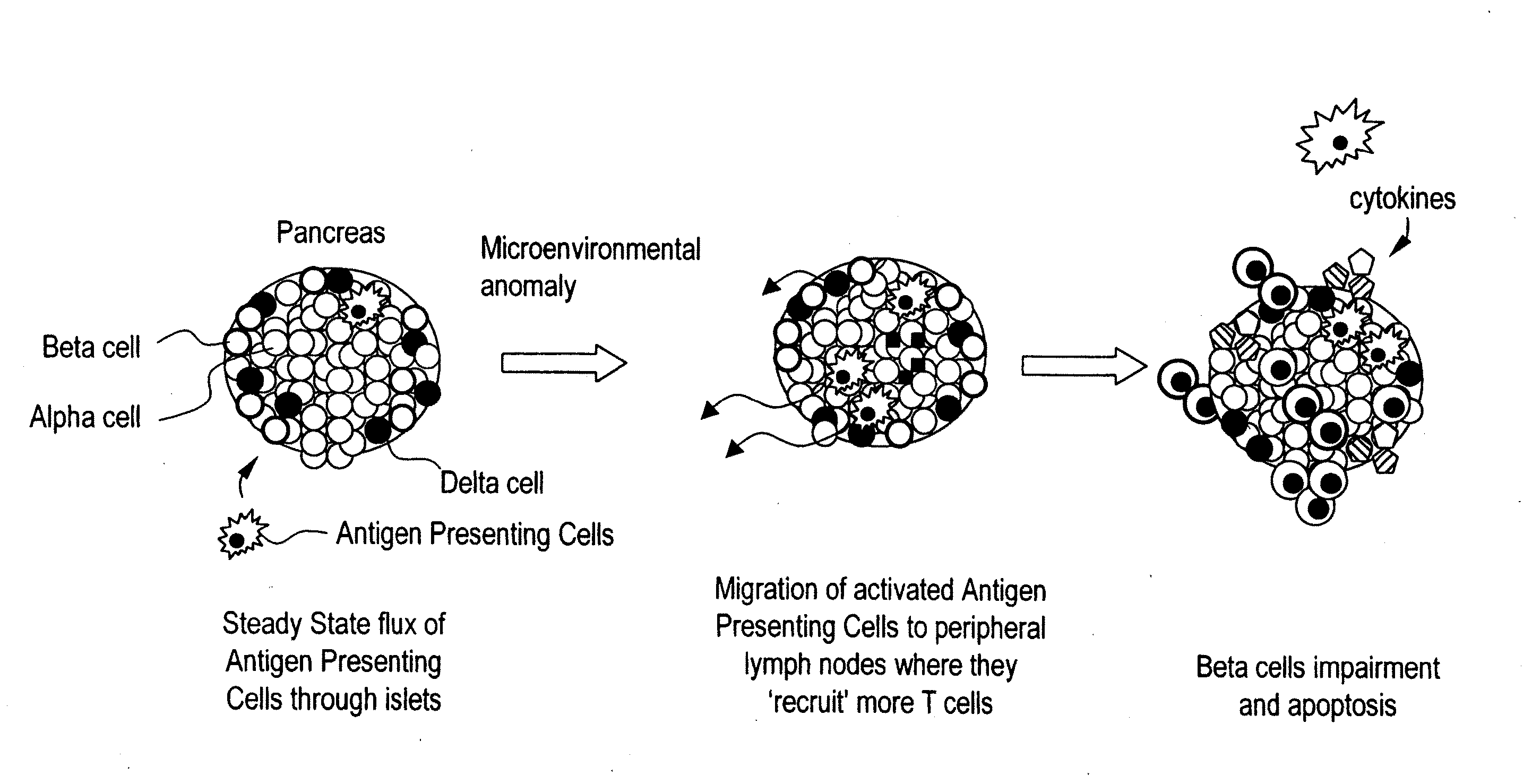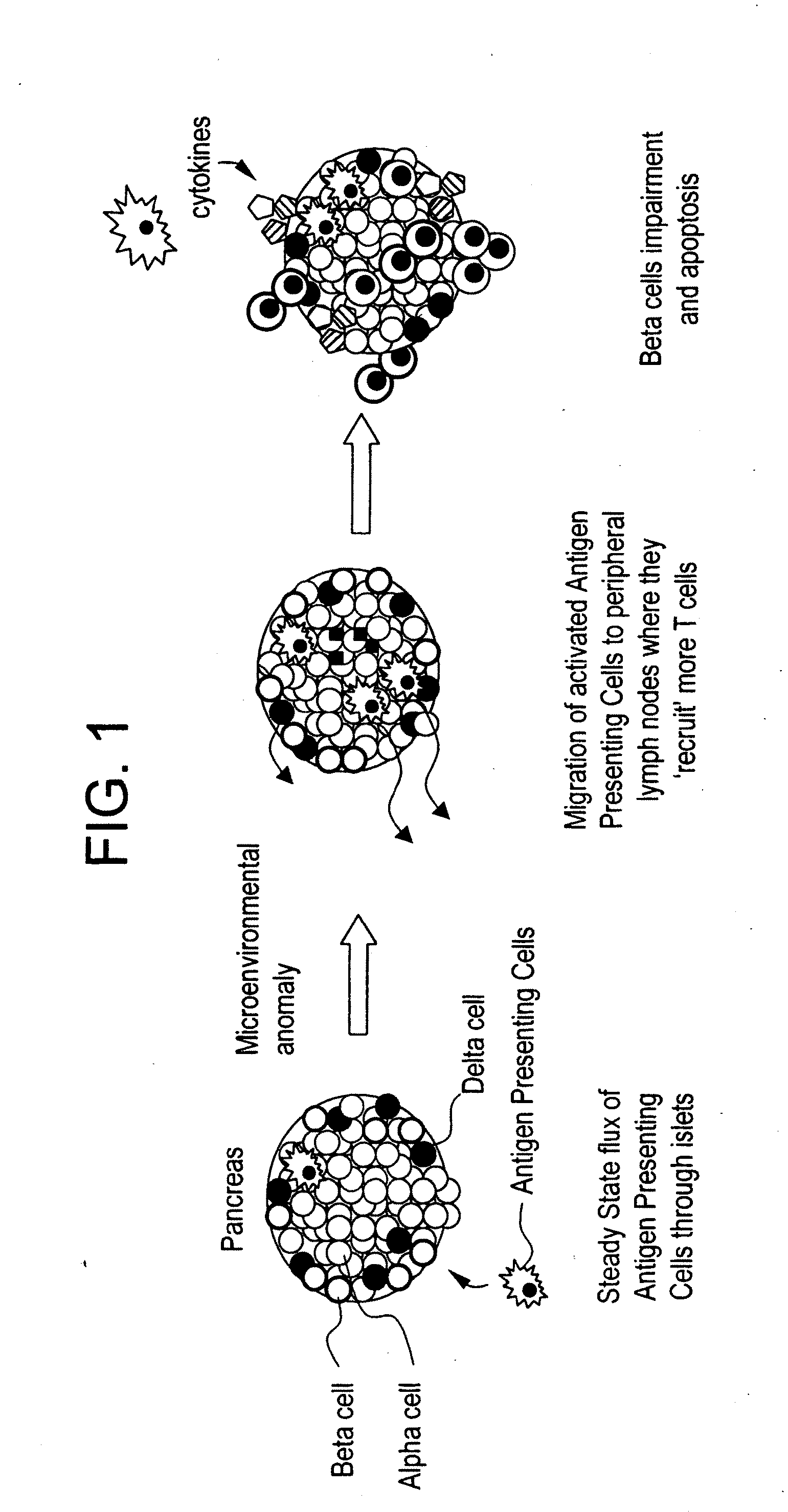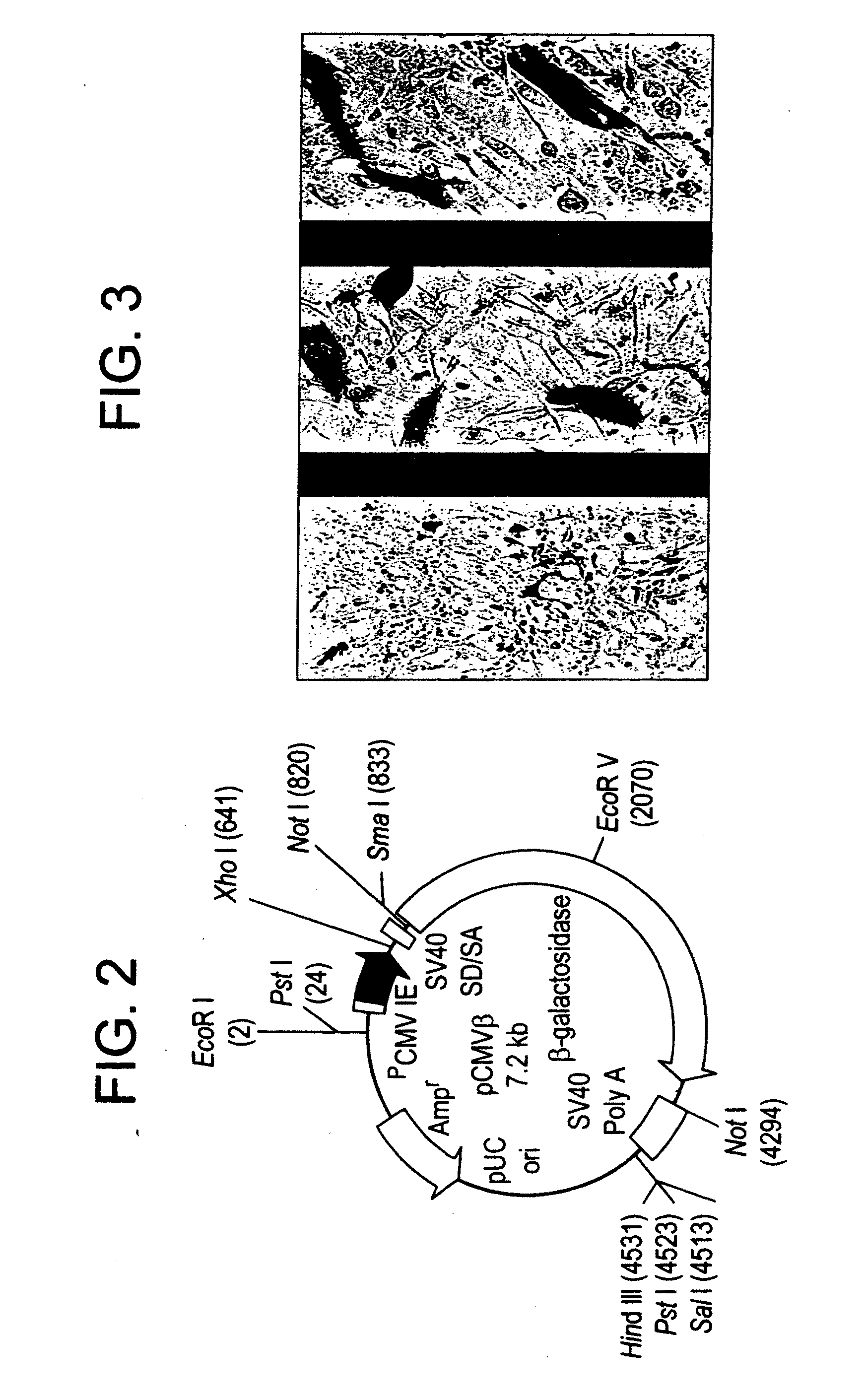Delivery of as-oligonucleotide microspheres to induce dendritic cell tolerance for the treatment of autoimmune type 1 diabetes
a technology of asoligonucleotide and microsphere, which is applied in the direction of immunological disorders, drug compositions, metabolism disorders, etc., can solve the problems of poor loading efficiency of microspheres produced using polymers, difficult and expensive production, and impede the access of nucleases, so as to induce dendritic cell tolerance and prevent the effect of nuclease access
- Summary
- Abstract
- Description
- Claims
- Application Information
AI Technical Summary
Benefits of technology
Problems solved by technology
Method used
Image
Examples
example 1
[0038]Three AS-oligonucleotides targeted to the CD40, CD80 and CD86 primary transcripts were synthesized by the DNA synthesis facility at University of Pittsburgh (Pittsburgh, Pa.). The AS-oligonucleotides sequences are:
Seq ID 1:CD 40-AS:5′C*AC* AG*C C*GA* GG*C* AA*AGA*C* AC*C A*T*G C*AG* GG*C* A-3′Seq ID 2:CD80-AS:5′-G*GG* AA*A G*CC* AG*G A*AT*CT*A G*AG* CC*A A*TG G*A-3′Seq ID 3:CD86-AS:5′-T*GG* GT*G C*TT* CC*G T*AA*GT*T C*TG* GA*A C*AC* G*T*C-3′
[0039]An aqueous solution of the oligonucleotide mixture was prepared by combining aliquots of three oligonucleotide solutions, each of which contained one type of oligonucleotide, to form a 10 [mg / ml] solution of the three types of oligonucleotides. 10 [mg / ml] poly-L-lysine.HBr in diH2O (poly-L-lysine.HBr up to 50,000 by Bachem, King of Prussia, Pa.) was prepared. Poly-L-lysine.HBr was added to the oligonucleotides solution at a volumetric ratio of 1:1. The mixture was vortexed gently. A 25% polymer solution containing 12.5% PVP (polyvinyl...
example 2
[0042]AS-oligonucleotides targeted to the CD40, CD80 and CD86 primary transcripts were the AS-oligonucleotides sequences of Example 1. An aqueous solution of the oligonucleotide mixture was prepared by combining aliquots of the three oligonucleotide solutions, each of which contained one type of oligonucleotide, to form a 10 [mg / ml] solution of the three types of oligonucleotides. A solution of oligonucleotide mixture was prepared. 5 [mg / mL] poly-L-ornithine.HBr in diH2O (poly-L-ornithine.HBr 11,900 (vis) by Sigma) was prepared. Poly-L-ornithine.HBr was added to the oligonucleotides solution. The mixtures were vortexed gently. A 25% polymer solution containing 12.5% PVP (40,000 Daltons, Spectrum Chemicals, Gardena, Calif.) and 12.5% PEG (3,350 Daltons, Spectrum Chemicals, Gardena, Calif.) in 0.1.M Sodium Acetate (Spectrum Chemicals, Gardena, Calif.) at pH=5.5 was made. The polymer solutions were added. Incubation and rinses followed as described in Example 1. 1.5 ml of the AS-oligon...
example 3
[0044]In vivo studies were conducted using the NOD mouse model of Type 1 diabetes mellitus. Type 1 diabetes is manifested by the autoimmune destruction of the pancreatic insulin-producing beta cells as illustrated in FIG. 1. AS-oligonucleotides were used in three applications in an attempt to interfere with the autoimmune destruction of beta cells. The goal was to interfere with the dendritic cell function by targeting the primary transcripts of CD40, CD80 and CD86, which encode dendritic cell surface proteins required for T-cell activation. Dendritic cells with low levels of CD40, CD80 and CD86 are known to promote suppressive immune cell networks in vivo. These cascades can result in T-cell hyporesponsiveness to beta cells in vivo.
[0045]In the first group of test animals, dendritic cells were propagated ex vivo from bone marrow progenitors of NOD mice. Combinations of the three AS-oligonucleotides targeting the primary transcripts of CD40, CD80 and CD86 were added to the cells in ...
PUM
| Property | Measurement | Unit |
|---|---|---|
| particle size | aaaaa | aaaaa |
| particle size | aaaaa | aaaaa |
| particle size | aaaaa | aaaaa |
Abstract
Description
Claims
Application Information
 Login to View More
Login to View More - R&D
- Intellectual Property
- Life Sciences
- Materials
- Tech Scout
- Unparalleled Data Quality
- Higher Quality Content
- 60% Fewer Hallucinations
Browse by: Latest US Patents, China's latest patents, Technical Efficacy Thesaurus, Application Domain, Technology Topic, Popular Technical Reports.
© 2025 PatSnap. All rights reserved.Legal|Privacy policy|Modern Slavery Act Transparency Statement|Sitemap|About US| Contact US: help@patsnap.com



